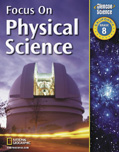1.
3.a A) the electron orbits B) its nucleus C) the electron cloud D) its outer energy shell 2.
3.a A) heat and temperature B) space and temperature C) space and mass D) space and heat 3.
3.a A) Isaac Newton B) J.J. Thomson C) Ernest Rutherford D) John Dalton 4.
3.a A) alpha B) proton C) electron D) neutron 5.
3.a A) These particles were attracted to the positively charged anode, and he knew that opposite charges attract each other. B) These particles were attracted to the negatively charged cathode, and he knew that like charges attract each other. C) The particles were spread evenly throughout the tube. D) Some of the particles went veering off at large angles to the tube. 6.
3.a A) protons B) electrons C) neutrons D) alpha particles 7.
3.a A) small ball within a large shell containing empty space B) solid ball the same throughout C) ball of raisin-cookie dough with raisins representing electrons D) electron cloud 8.
3.a A) closer, more B) farther, fewer C) farther, more D) farther, more tightly bound 9.
3.a A) negative B) highest C) middle D) lowest 10.
3.a A) 8 B) 12 C) 4 D) 6 11.
3.a A) chemical symbol B) electron dot diagram C) chemical formula D) chemical equation 12.
3.a A) proton B) nucleus C) neutron D) electron 13.
3.a A) if Thomson's model of the atom was correct B) the speed at which alpha particles travel C) if Dalton's model of the atom was correct D) the size of the electron orbit 14.
3.f A) 17 B) 1 C) 35 D) 18 15.
3.f A) They are all Group I elements. B) They are all nonmetals. C) They all have two electrons in their outer energy levels. D) They are all metalloids. 16.
3.f A) They are metals. B) They have three electrons in their outer energy levels. C) They have the same number of neutrons in their nuclei. D) They are metalloids. 17.
3.f A) molecule B) ion C) compound D) solution 18.
7.b A) mixture B) metal C) element D) compound 19.
7.b A) 40 B) 0 C) 20 D) 10 20.
7.b A) the age of sedimentary rock layers B) the age of dead plants and animals C) the best method for the disposal of a radioactive sample D) how fast a radioactive sample will decay
















